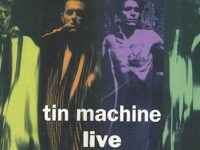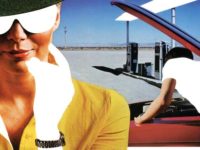It’s often accepted without reservation that Deep Purple’s Machine Head is one of the essential entries in the hard-rock canon of the early 1970s. From the tightly arranged opener “Highway Star” to the mutant blues of “Lazy” and the intergalactic jam-out finale of “Space Truckin’,” the album’s seven tracks were well recorded, well played, and fit the profile promoted on album-oriented rock music stations that seemed to be multiplying exponentially along the FM radio dial.
As well, “Smoke on the Water” appealed to consumers with AM radio pop sensibilities. The song’s popularity was based primarily on the crushing, immediately identifiable guitar intro that sent amateur musicians everywhere to their instruments of choice to cop that simple riff in the hopes of copping some coolness points, too.
It’s also just as easily believed these days that Deep Purple’s next studio album was weak and disappointing, and didn’t expand their fan base or critical acclaim.
Released on Jan. 12, 1973, Who Do We Think We Are? is often reported to have been made under poor conditions caused by the strains of fatigue due to constant touring and animosity among some of the band members. The finished tracks that made it to the resulting LP are not considered in most quarters to be among Deep Purple’s best, as further evidenced by the fact that soon afterward vocalist Ian Gillan and bassist Roger Glover left the band.
But there are always other factors to consider. First, by all accounts Who Do We Think We Are? sold very well, helping Deep Purple to be the top selling rock artist in the U.S. in 1973. Second, comparison with Machine Head is somewhat colored by the fact that four out of seven of that album’s songs were featured on the live Made in Japan as well.
Perhaps more importantly, Made in Japan was released Stateside about three months after Who Do We Think We Are?, which might have drawn attention away from the new release and refocused it back on to the earlier Machine Head. Those live performances also presented the Machine Head tunes infused with levels of energy and wildness not immediately apparent in the sanitized studio versions, whereas the material on Who Do We Think We Are? never really got heard in a similar context.
As for the stress level under which Who Do We Think We Are? was recorded? Well, by comparison, during the recording of Machine Head, the studio sessions were threatened by a major fire. How much more stress do you want? Actually, most available information suggests much of Deep Purple’s recording activity during this time period consisted of assorted sessions based on availability and locations while on the road.
Furthermore, the typical process was to assemble songs piecemeal from riffs and bits and scraps of lyrics and ideas. And in almost every group of highly talented, successful musicians, there are always bound to be tensions. So, in most respects, Who Do We Think We Are? was recorded under no different conditions that the ones they were used to working under anyway.
In that light, free of any sentimentality associated with the break up of Deep Purple’s Mark II lineup and the previous success of Machine Head, it becomes easier to appreciate Who Do We Think We Are? as a decent enough album based on its own merits. True, it doesn’t have as many songs that can match Machine Head’s aforementioned highlights, but it also avoids the padding – or, in other words, the material on Machine Head that usually goes unmentioned.
“Woman from Tokyo,” the opening number on Who Do We Think We Are?, is a strong lead off track. The bonus version found on subsequent reissues supports that fact: Deep Purple knew when to leave the unnecessary parts on the cutting room floor where they belonged. The rest of side one plays out well enough, with “Smooth Dancer” in particular rockin’ quite hard.
Side two opens with “Rat Bat Blue,” a great little piece that anticipates perhaps some of the funkier elements found on later Deep Purple albums like Burn. “Place in Line” is the mandatory long blues work out, and “Our Lady” attempts a psychedelic tone with some slightly overused phase-shifter effects.
In the end, this LP is of a piece with the other three by the Deep Purple Mark II configuration: not as perfect as In Rock and not as successful as Machine Head, but more focused than Fireball. If for no other reason, Who Do We Think We Are? has to be respected for its own particular version of grace under pressure.
- How David Bowie’s ‘The Next Day’ Stripped Away All of the Artifice - March 15, 2023
- Why Deep Purple’s ‘Who Do We Think We Are?’ Deserves Another Listen - January 11, 2023
- In Defense of the Often-Overlooked Mott the Hoople - November 10, 2022




